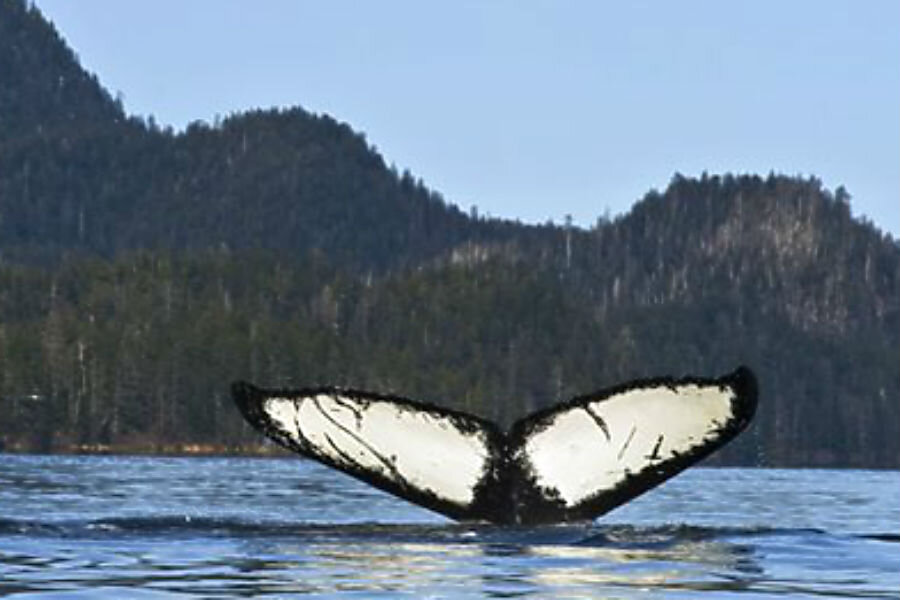Save the whales? Why the humpback doesn't need protecting anymore
| Honolulu
The humpback whale became the unofficial symbol for the conservation movement in the last century.
The iconic whale that can be found across the planet was on the verge of extinction. The international community banned whaling the species in 1966, and the U.S. government put it on the endangered species list four years later.
On Monday, federal officials said removing most of the world's humpback whales from the endangered species list, noting that the massive mammals have rebounded after 45 years of protection and restoration efforts, is a national success story.
"To be able to bring a species to a point where their population is doing well and they no longer meet those requirements to be on the endangered species act, I think that is a really important success for us as a nation," Donna Weiting, the director of the National Oceanic and Atmospheric Administration's Office of Protected Resources said during a news conference.
"So I think it's quite a big deal," she added.
The agency is proposing dividing up the population of humpback whales into 14 separate categories, and fisheries managers say 10 of those should be removed from the endangered list. Two will remain listed as threatened, and two others will be listed as endangered.
But just because the animal could soon be off the endangered list doesn't mean there will soon be hunting seasons again.
All the whales remain protected under the Marine Mammals Protection Act, and the United States is still an active member of the International Whaling Commission, which banned commercial whaling in 1966, said Angela Somma, chief of NOAA Fisheries' endangered species division.
There are only a few places in the world that still allow hunting of humpback whales, and that is for aboriginal subsistence only, according to the International Whaling Commission's website. Three nations, Japan, Norway and Iceland, still allow the animals to be killed for scientific research.
Humans hunted the whales in much higher numbers before their listing as endangered. Humpbacks were listed as endangered in 1970, four years after the International Whaling Commission banned commercial humpbackwhaling. The commission put a stop to all commercial whaling in 1986.
Humpbacks are found around the world, and officials say protection and restoration efforts have increased their numbers in many areas. Among those recommended for delisting is the population that migrates each year from Hawaii to Alaska.
Decisions on which whale groups to recommend were based on many factors, including the risks they face, NOAA officials said. The single largest threat to humpbacks is fishing activities that result in the whales becoming tangled in fishing gear and drowning.
The most important considerations in determining if populations will remain on the list are their size and growth rates, Weiting said. "Ten of these populations are no longer in danger of extinction, which is our criteria for an endangered listing, nor are they likely to become so in the foreseeable future, our criteria for a threatened status," she said.
Some populations are growing at a rate of up to 11 percent annually since the listing, which requires federal approval for federally funded or authorized activities that could harm whales or their habitat.
Last year, the state of Alaska filed a petition to remove some North Pacific humpback whales from protection under the Endangered Species Act. That population, estimated at more than 10,000, feeds in Alaska in the summer and breeds in Hawaii in winter.
Rebecca Noblin, Alaska director for the Center for Biological Diversity, said it's a good sign the whales are being considered for removal from the list, but it might be premature. Whales continue to be vulnerable to factors including climate change and ocean acidification, which affects their prey stock, she said.
"It would really be beneficial to continue to have the protections of the Endangered Species Act as the oceans change," she said.
The last time NOAA removed a species from the endangered list because of its recovery was in 1994, when it delisted the eastern North Pacific population of gray whales.
Humpbacks weigh 25 to 40 tons and can grow up to 60 feet long. They are primarily dark gray with some white spots, and their pectoral fins can grow as long as 15 feet, according to NOAA's website.
The public has 90 days to comment on the recommended changes.
___
Follow Caleb Jones on Twitter: @CalebAP





